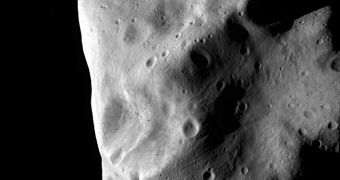Shortly after the Sun formed, the protoplanetary disk around it began to differentiate, showing signs of clumping. The largest such clumps grew even larger, and eventually became planets, but others still turned into large asteroids. A new study indicates asteroid 21 Lutetia as such a space rock.
The main batch of data researchers used to reach this conclusion comes from the European Space Agency's (ESA) Rosetta spacecraft. Additional readings were collected by the New Technology Telescope, which is operated by the European Southern Observatory (ESO), in South America.
Several NASA telescopes were also a part of the investigation, which was able to confirm that Lutetia is indeed made up of the same material that gave birth to at least the first three rocky planets in the solar system – Earth, Venus and Mercury.
At this point, the space rock orbits the Sun in the Inner Asteroid Belt (IAB), which is located between the orbits of Mars and Jupiter. It most likely formed in the inner solar system alongside all planets, but later moved on to take its current position.
The research team that conducted the new investigation was made up by experts from universities in France and the United States. Together, they managed to acquire sufficient data to look at Lutetia in a nearly all wavelengths, which was extremely helpful.
Rosetta captured images of the asteroid using its OSIRIS camera, whereas NTT's ground-based observations were augmented by the Hawaii-based NASA Infrared Telescope Facility and the Spitzer Space Telescope.
“Lutetia seems to be the largest, and one of the very few, remnants of such material in the main asteroid belt. For this reason, asteroids like Lutetia represent ideal targets for future sample return missions. We could then study in detail the origin of the rocky planets, including our Earth,” Pierre Vernazza says.
The expert – who was the lead author of the new paper – holds an appointment as a research scientist at ESO. He says that Lutetia's characteristics were compared to those of enstatite chondrites, which are meteorites found on Earth that researchers believe originated in the early solar system.
Scientists found a striking similarity between the two types of rocks, confirming that indeed Lutetia must have formed within close proximity to the Sun, and only later migrated to the IAB. There are numerous reasons for why this migration may have taken place, the team concludes.

 14 DAY TRIAL //
14 DAY TRIAL //